Description
Gul surkh – Gulab – Rose – Health Benefits

Made with rose petals and hips, rose tea is an aromatic and delicious beverage with health benefits that are almost as sweet as the comfort drink itself. Roses contain beneficial vitamins and minerals that boost the immune system and improve overall health.
Evidence indicates that roses have been around for about 30 million years. While their origins have been traced to the Middle East, roses are now cultivated worldwide.
Rose petals contain natural antioxidants known to repair cellular damage and protect against serious diseases. Rose tea is made from fresh petals and hips and green rose tea is produced from dehydrated plants.
As well as the numerous physical benefits, rose tea has proven to be an effective treatment for emotional disorders like depression and anxiety. Fragrant and delicious, rose tea is also calorie-free and the perfect beverage when you need a boost.
1. Rose Tea Can Help Against Menstrual Pain
A 2005 study confirmed the anti-inflammatory quality of rose tea in treating symptoms of menstruation, including painful cramping and bloating.The Journal of Midwifery and Women’s Health reports that about 50 percent of adolescent girls experience Dysmenorrhea or painful periods.
Back pain and cramping are typical, but severe symptoms include nausea, diarrhea, headache, fatigue and mood swings. While most cases are not linked to serious health problems, the study did connect painful adolescent menstruation to an increase in school absence and a decrease in academic performance.
Researchers followed 109 adolescent females over a six month period. The girls in one group drank two cups of rose tea daily starting one week before their period through the fifth day of menses. Those in the tea group reported less pain and anxiety than the control group after just one month of treatment with rose tea and symptoms continued to improve throughout the study.
Key takeaway: Rose tea is a safe and simple and proven treatment for the physical and emotional discomfort associated with menstruation.
2. Drinking Rose Tea Is Good For The Skin
Full of vitamins A and E, rose tea helps to hydrate and tighten skin reducing the appearance of lines and diminishing dark circles. In fact rose petals or rose hips are main ingredients in numerous skin care products.
Rose petals are a good source of Vitamin C, also known for its antioxidant properties. Nutritionists report that vitamins obtained through foods are better absorbed than tablets or supplements and rose tea is a tasty, tart alternative.
Drinking aromatic rose tea provides immune system support and promotes the production of collagen, the protein responsible for healthy skin and hair. The drink also contains anti-inflammatory and antibacterial qualities known to improve acne.
Rose tea can also be applied topically. Let the brew cool and use it as a daily toner, the sweet-smelling tea will also improve sun damage with regular use. Rose tea can also be used to treat and relieve painful skin rashes and irritation.
Key Takeaway: Rose tea is a safe and natural solution to skin care. Used daily, the tea improves appearance and diminishes the signs of aging.
3. Rose Tea Can Cure Sore Throats And Flus
A cup of rose tea is an effective and soothing treatment for sore throats and symptoms of the common cold and flu. The tea’s Vitamin C content aids in fighting infection and eases pain.
Rose tea has more Vitamin C than citrus fruit.
Recognized as a food source throughout history, the medicinal value of rose petals and hips did not gain attention until the mid-20th century. Adding a teaspoon of honey improves the healing potential and adds taste according to the Natural Healing Guide. Experts also recommend drinking three to four cups of rose tea daily in the early spring and fall to avoid getting the flu.
Rose tea products also are a good source of vitamins B1, B2 and K and contain beta-carotenes. Other component found in rose tea include, bioflavonoids, tannins and pectin which help to fight infection and reduce inflammation.
Key Takeaway: Rose tea is loaded with vitamins and mineral that boost the immune system and fight infection.
4. Drinking Rose Tea Improves Our Digestion
Teas made from rose petals and rose hips are also known to improve overall digestive function. By stimulating the production of bile, rose tea improves digestion of fatl as well.
Rose tea is believed to promote the growth of microflora, or good bacteria, in the gut. The tea also works as a natural and mild remedy for constipation. According to natural healing experts, pectin contained in rose tea binds with fat and cholesterol in the intestines removing them before they are absorbed.
An effective anti-inflammatory rose tea reduces pain and swelling and helps to eliminate water accumulation in tissues improving joint health. By stimulating the production of bile, rose teas improve function in the gut and aids in the digestion of fat and cholesterol as well.
Historic accounts claim that rose tea was also used to treat diarrhea and dysentery. While there is no direct research to support the claim, researchers believe that the probiotic properties of rose tea might have been effective, depending on the cause of the stomach ailment.
Key Takeaway: Rose tea is a safe digestive aid proven especially effective in the digestion of fats, the brew also promotes the growth of good bacteria in the gut.
5. The Aroma of Rose Tea Can Alleviate Stress And Anxiety
Rose tea can also be used to relieve anxiety, reduce stress and improve the symptoms of depression. For people who suffer from these debilitating disorders, the tea offers an alternative to pharmaceutical treatment without the risk of side effects and addiction.
While it might not alleviate all symptoms depending on severity, rose tea can be used as part of most treatment plans. The aromatic effect of rose tea is effective in calming the mind and helping to unwind and drinking rose tea at bedtime might aid in getting a good night’s sleep.
Health experts suggest adding rose tea as part of a regular stress-relieving regiment such as keeping a journal, working out or daily meditation.
Key Takeaway: Rose tea is a natural and safe treatment for stress, anxiety and depression and can be incorporated with an overall treatment plans without nasty side effects or the risk of addiction.
6. Rose Tea Can Reduce Pain From Urinary Tract Infections
Urinary tract infections are painful and common. Rose tea, a natural diuretic that eases the discomfort and helps get rid of the infection. Combined with the antioxidant and antibacterial properties, the tea is effective treatment for mild UTIs.
UTI germs are the same germs found in the intestines. When the germs find their way into the urethra and bladder, the body cannot protect itself. Women are more likely to contract urinary tract infections due to a shorter urethra, which makes it easier for germs to get into the bladder.
Rose tea reduces inflammation that causes pain. Staying hydrated is crucial to pain management and fighting infection, especially infections near the bladder. Experts suggest drinking one large cup of warm tea three to four times a day to treat a UTI.
Herbalists also claim that drinking rose tea regularly improves kidney health and function and prevent kidney stones. The centuries-old cure increases the flow of urine and has a mild disinfectant property that soothes irritation.
Key Takeaway: Urinary tract infections are painful and more common among women. Rose tea relieves pain and inflammation while helping to fight the infection and promote kidney health.
7. Rose Tea Can Boost The Immune System
The high Vitamin C content in rose tea provides strong immune system support, which medical experts state is vital to the resistance of serious diseases like cancer as well as common infections like colds and flu.
The primary function of the immune system is to protect the body from infection and disease. Physicians’ groups assert that supporting a healthy immune system should include, stress management, exercise, a healthy diet and appropriate use of nutritional supplements and herbal medicine.
When consumed in rose tea, Vitamin C is rapidly absorbed and works quickly to fight infection and speed up the healing of wounds. Healthy metabolism and adrenal function also rely on Vitamin C and rose tea is a pleasant, soothing alternative to vitamin tablets and supplements.
Once it brewed, rose tea retains its flavor and effectiveness throughout the day and is enjoyable both hot and iced.
Key Takeaway: Rose tea delivers Vitamin C which is rapidly absorbed into the system and combined with diet and exercise, the tea can help maintain immune system health.
8. Rose Tea Can Treat Arthritis
Arthritis is the leading cause of disability in the United States. While arthritis is common, the disease is often misunderstood. “Arthritis” refers to joint pain or joint disease and there are more than 100 different types of the disease. In severe cases arthritis results in chronic pain and permanent joint damage.
A 2015 study concluded that the anti-inflammatory properties of rose tea is equal to a prescription NSAID. The tea relieves pain without potential stomach upset and ongoing research suggests that rose tea also increases circulation and improves joint health.
As a natural diuretic, rose tea helps to gently eliminate accumulated water within tissues that causes inflammation and increased pain. Herbalists recommend drinking two cups of rose tea each daily to reduce the inflammation and pain of arthritis.
Key Takeaway: Rose tea provides relief for arthritis sufferers by reducing swelling and pain and helping to eliminate fluid buildup and without the stomach upset sometimes caused by prescription NSAID.
9. Rose Tea Can Be Used For Treatment Of Scalp Seborrheic Dermatitis
A study in 2014 compared shampoo made from Rose petal extract to ketoconazole and zinc-pyrithione shampoos, both are commonly used to treat scalp seborrheic dermatitis. The research determined that the natural Rose petal shampoo was just as effective as the medical treatments.
Scalp seborrheic dermatitis is a red rash on the scalp accompanied by flaking and itching. The skin disorder can appear on the body as well as the scalp. While an exact cause is unknown, it can be triggered by stress, medicine or cold, dry weather. The disorder is also common in infants.
While scalp seborrheic dermatitis sometimes disappears on its own, the disease typically last for years with intermittent flare ups. Drinking rose tea helps to cleanse the body of toxins and the antibacterial properties fight infection of the affected area.
Key Takeaway: Rose petal extract was proven to be as effective in treating scalp disorders as medicated shampoos and drinking the tea is believed to reduce future flare-ups.
10. Rose Tea Has Virtually No Side Effect
Rose tea is a safe herbal remedy with no reported adverse side effects. However, some health officials recommend limiting tea consumption to five cups per day.
In spite of the beneficial qualities of rose petals and rose hips, the tea is loaded with Vitamin C and excess consumption of the vitamin can cause diarrhea, headache, dizziness and nausea. Rose tea is caffeine free and a healthy alternative to sugary soda and juices, but natural does not necessarily mean safe where children are concerned.
Many parents combine alternative medicine like herbal teas with traditional therapy to treat children. The safety of the practice depends on the child’s age and general health as well as the frequency of treatment.
A pediatrician should be consulted before giving any herbal product to children who are currently under medical care.
Key Takeaway: Consumed in sensible quantities rose tea has no reported adverse side effects, but parents should consult a pediatrician before giving the tea to children being treated for any medical condition.
11. Rose Tea Can Help In Weight Loss
About two-thirds of the adult population in the United States is overweight. Research conducted by one university in 2010 concluded that only one in six obese people manage to keep the weight off if they manage to lose it.
While there is no magic compound in rose tea to bust fat, it is a healthy, calorie-free option to creamy coffee drinks and caffeinated sodas. Swapping rose tea for soda or coffee can help maintain long term weight loss goals.
A cup of rose tea between meals also relieves hunger pangs and as part of an overall diet plan, rose tea improves digestion of fats and cholesterol. Pectin contained in rose petal extracts, binds with fat and cholesterol before they can be absorbed into the blood.
Rose tea is delicious on its own, but spices can be added for variety. The tea can be made ahead of time and is satisfying and healthy served up hot or cold.
Key takeaway: While there is no magical concoction to make fat disappear, drinking rose tea relieves hunger pangs and is a refreshing, fragrant beverage that can help maintain long-term weight loss goals.
12. Rose Tea Is Safe For Pregnant Women
Many women are hesitant to use herbal products during pregnancy and mothers to be who are being treated for other existing condition should always consult their doctor before adding any herbal medicine.
However Childbirth Solution reports that rose tea is not only safe, but beneficial when consumed during pregnancy. Vitamin C is essential for collagen formation in both mother and baby. The group lists rose tea as one of the most effective herbal sources of Vitamin C.
Many foods including cabbage, papaya, guava and cantaloupe are high in Vitamin C and also helps maintain iron and calcium absorption and both are crucial to fetal development.
Rose teas rose contain vitamin E, selenium, manganese, B complex vitamins, magnesium and potassium. Combined they provide immune system support to protect mother and baby.
Key Takeaway: Rose teas are safe and beneficial for pregnant women and a good source of vitamins and minerals. Compounds in the tea promote healthy development and a boost to the immune system protecting mother and baby.
13. Rose Tea Is Easy And Fun To Cook
Nothing sets a scene quite like roses. The delicate petals and perfectly sweet fragrance has become the epitome of romance and charm.
Rose tea can be made from rose petals collected from your own garden adding tradition and personal accomplishment to its list of benefits. Fresh rose petals should be pesticide free and the flower’s white base should be discarded.
Combine about two cups of clean and dry about rose petals with about three cups of water. Bring the water to near boiling, about 80 degrees Fahrenheit, and add the rose petals. Honey, sweetener or spice can be also be added to taste.
Turn down the heat and simmer for five to 10 minutes or until rose petals turn dark. Strain the petals from the tea, fill a cup and enjoy. Rose tea will keep its flavor and beneficial properties long after it’s brewed.
Green rose tea is brewed from dried rose petals that are sold at most specialty tea shops.
Key Takeaway: Rose tea is simple to make and the tea retains its flavor and healthy benefits after being brewed. The tea is tasty served hot with a sprig of lemongrass or cold with a slice of citrus.
14. Rose Tea Has Potential Anti-Cancer Agents
Scientists have determined that rose teas help to block genetic mutations which can cause cancer. A study in 2013 looked at petals from several rose growers and concluded that the anti-mutagenic properties of rose extracts is due to the plant’s high anthocyanin content.
Roses are rich in in anthocyanins, blueberries, raspberries, black rice and black soybean are among others food plants with high anthocyanins. The enzyme can be used as a genetic marker in identifying certain material.
High in antioxidants called EGCG, catechins and polyphenols, rose tea protect the body from damage by free-radical, which can cause cancer. The powerful antioxidants have also been shown to kill cancer cells without harming healthy surrounding cells.
Rose teas have been valued for their medicinal properties as part of Chinese medicine for more than 5,000 years and its benefits are well documented throughout history.
Key Takeaway: Powerful antioxidants contained in rose tea block genetic mutations that can cause cancer. With powerful antioxidants and other healthy compounds, rose tea can help reduce oxidant effect of cancer cells in the human body.
15. Rose Tea Can Be Used For The Shower
A hot bathtub or shower is a great place to indulge in the healing qualities of rose tea.
Prepare tea as usual and soak your loofah sponge or wash towel in the tea, then rub it onto skin or scatter petals in a warm tub for a sweet-smelling and calming experience.
Drinking rose tea hydrates and tightens skin and diminishes the appearance of lines, dark circles and wrinkles. Numerous skin care products even list rose petals and rose hips as a main ingredient.
Natural antibacterial compounds in rose tea improve skin health and the aromatic quality reduces stress. Sipping rose tea while soaking in a hot tub also speeds up delivery of vitamins, minerals and antioxidants that recharge the immune system and increase energy.
Key Takeaway: Rose tea can be added to baths to provide your skin with powerful antioxidants and nutrients. It contains natural compounds that work hard to reduce aging symptoms such as wrinkles, dryness, etc.
6 Delicious Ways To Use Rose Tea
Producing rose tea and crafting new recipes and remedies is one way to maximize the pleasure and benefits of rose tea. Roses are hearty plants that can be cultivated in most regions and the the number of rose producers continues to grow as word of the tea’s beneficial use spreads.
Dried rose petals and hips can be purchased at most specialty tea shops and online. Dehydrated petals sell for $1.50 to $2.50 per cup while fresh-picked rose petals sell for between $1 to $2 per cup. The products should be stored in a cool, dry area.
Fresh petals should be picked while they are still fragrant.Below are five DIY remedies that highlight the health benefits of rose tea.
1. Rose Garden Jam
Homemade rose petal jam is a colorful and sweet treat and the perfect condiment for a fancy Sunday brunch or toast with tea in the kitchen.
Ingredients:
Water – 8 cups
Dried or fresh, red hibiscus flowers – 6
1 cup fresh and a 1/2/cup dry scented, pesticide-free rose petals
1/8 cup dried or ¼ cup of fresh chopped rose hips
1 piece of dried or fresh pear
½ cup of fresh black currants or ¼ cup of fresh currants
1 each dried or apricot, fresh, apple dried or peach or nectarine.
Juice – 1 lemon and lemon zest of 1 unwaxed lemon
Vanilla extract 1 teaspoon
Sugar – 4 cups
Pectin – two packets
Method:
- After washing and, coring, cut fruit into ¼ inch pieces or rinse dried and cut into ¼ inch pieces. Use scissors to cut hibiscus flowers and combine with rose hips and 4 cups water, and bring to a boil.
- Bring the other 4 cups of water to a boil in a separate pan and add the sugar and all dried fruit. Boil for three minutes stirring constantly.
- Remove from pans both heat and add rose petals to the hibiscus tea and set aside.
- In the pan of sugar water add fruit and stir for about one minute.
- Cool for at least five minutes.
- If you prefer, filter the flowers from the tea, but the blossoms create a rich flavor when left in.
- Combine the tea, sugar and fruit and add lemon juice, lemon zest and vanilla extract stir in pectin making sure that it is until fully dissolved.
- Pour jam into into clean and boiled jars allowing ¼ inch space at the rim of the jar.
- Wipe the rim of the jars clean, tighten lids and rims.
- Boil 10 minutes and remove from heat. Allow the jars to stand in hot water for r 10 minutes.
- Use Tongs to remove jars and set them on a dry towels. Be cautious because the jar can explode if touched by anything cold or wet.
- Jam can be stored in the refrigerator or a cool, dark place and it will keep for up to a year.
2. Rose Water
Rose water can be used daily as a refreshing toner and to treat minor skin irritation. Combined with witch hazel, rose water can relieve itching and burning and it’s safe for all age and inexpensive.
Ingredients:
1/3 Cup Rose petals, fresh or dried
⅓ Cup Witch hazel
⅔ Cups Distilled water
Method:
- Place rose petals in a wide-mouthed, one quart jar.
- Mix water and witch hazel and pour over the rose petals taking care to cover the petals with two inches inches of liquid.
- Cover with lid and place in a warm area out of direct sunlight for two weeks
3. Rose and Chamomile Bath Bags
Rose and chamomile are beneficial for tired skin pleasant to the senses.
Adding these herbs infuses the water, nourishes the skin and relieves stress.
Ingredients:
1 tablespoon of Rose Petals
1 tablespoons of chamomile tea leaves
Method:
- To experience an aromatic, herbal bath combine 1 tablespoon of each herb on a circle of fabric. Fold up the sides of the cloth to form a pouch and tie with a ribbon. Chamomile and rose petals are good for the skin and pleasing to the senses.
- Add these herbs for to the bath for a unique, aromatic experience . The herbs transform the bath and nourishing the skin.
- Place 1 tablespoon of each herb on a circle of fabric. Draw the sides of the fabric into a pouch and tie with a ribbon. Using a muslin tea bag increases scent.
4. Happy Pregnancy Tea
This herbal remedy tones the uterus and prepares the body for birth loaded with vitamins and minerals Happy Pregnancy Tea supports immune health and protects both mom and baby.
Ingredients:
2 cups Red Raspberry Leaf
1 cup Nettle Leaf
1 cup Oatstraw
1/3 cup pesticide-free Rose Petals
1/3 cup Alfalfa
Method:
- Combine all the ingredients together and transfer in a glass jar. Seal it and make sure that it is airtight.
- Add 1 tablespoon of Pregnancy Tea to a glass of boiling water. Let it steep for 8 to 10 minutes. Strain it and sweeten to taste using natural sweeteners.
- Drink one cup of Happy Pregnancy Tea during the first trimester and increase to two cups in the second trimester and three cups of tea during the third. During the ninth month of pregnancy increase to five cups of tea daily.
6. Grandma’s Home Remedy
Grandma’s home remedy removes gravel from the kidneys and combats chronic urinary-tract infections The brew also relieves gout by eliminating uric acid.
Ingredients:
Rose hip – 1 ½ ounces
Nettle Leaves – 3/4 ounce
Goldenrod leaves – 3/4 ounce
Horsetail leaves -3/4 ounce
Method:
- Add two teaspoons of tea mixture to 1 cup of boiling water strain the tea and pour into cup.
Wrapping It Up
Teas made from rose petals, rose hips and rose buds are a good source of vitamins and minerals and rose tea contains powerful antioxidants proven to lower the risk of cancer by blocking free radicals in the body.
Rose tea is a centuries-old remedy with no reported side effects. Studies conclude that tea made from rose petals if effective in managing pain associated with menstruation. The refreshing and fragrant tea is not only safe but beneficial for pregnant women, high Vitamin C content in Rose petals promotes collagen formation crucial to the development of both mother and baby.
As part of a healthy regimen, rose tea boosts the immune system and helps fight infection and prevent colds and flu. A natural diuretic, rose tea also increases urine flow and helps prevents urinary tract infection.
Whether you suffer from chronic illness or your goal is just to live a healthier lifestyle and increase energy levels, rose tea could be the only herbal supplement you need.
Gul surkh – Gulab – Rose
گل سرخ – گلاب – گلاب کا پھول – گلاب کا زیرہ – زرورد – زیرہ گل سرخ
ماہیت ۔ مشہور پودا ہے جولگ بھگ تین چار فٹ سے تیرہ چودہ فٹ اونچا دیکھاگیاہے اس کے پتے گہرے سبز کنارے کٹے ہوئے کھردرے اور نوک دارہوتے ہیں شاخیں کانٹوں سے بھرپور پھول سرخ رنگ کے جوبطور دواء بکثرت مستعمل ہیں ۔ یہ پھول بہت سی پنکھڑیاں والے گولائی لئے ہوئے خوشبو دار اور خوبصورت ہوتے ہیں ۔ان کا ذائقہ قدرے کسیلاو شیریں ہوتاہے۔گلاب کے پھول کے درمیان بہت چھوٹے چھوٹے دانے ہوتے ہیں جن کو زیرہ درد گلاب کا زیرہ کہا جاتا ہے ۔
گلاب کے پھولوں کی رنگت کے لحاظ سے بہت سی اقسام ہیں بلکہ سینکڑوں اقسام ہیں ۔
مقام پیدائش۔گلاب کا اصل وطن برصغیر ہے ۔یہاں سب سے پہلے اس کے عرق کو استعمال کیاگیا۔جس کی وجہ سے اس کو گل آب کانام دیاگیاآب گلاب کہلاتاہے۔گلاب پاکستان ہندوستان ایران اور شام وغیرہ میں بہت ہوتاہے۔
مزاج ۔ سرد خشک ۔درجہ دوم ۔
افعال ۔ مفرح و مقوی اعضائے رئیسہ مقوی بدن ، مقوی معدہ و آمعاء مسہل ، قابض خصوصاًخشک گل سرخ مسکن حدت صفراء معطر معرق بدن ، محلل اورام مسکن اوجاع ، مجفف قروح اور کثرت پسینہ کو روکتاہے۔
استعمال بیرونی – گلاب کا پانی نچوڑ کر آنکھ میں قطور کرنے سے آشوب چشم حارکو اور کان میں ڈالنے سے کان کو درد کو فائدہ دیتاہے ۔ صداع کو تسکین دینے کیلئے پانی میں پیس کر پیشانی پر ضمادکرتے ہیں ۔ گل سرخ میں قوت تحلیل کے باوجود قبض اور عطریت ہے ۔ لہذااورام جگر کے ضمادوں میں شامل کرکے استعمال کرتے ہیں ۔ دانتوں کو مضبوط کرنے اور ان کے درد کو تسکین دینے کیلئے پانی میں جو ش دے کر غرغرے کراتے ہیں نیز سفوفات میں شامل کرکے دانتوں پر ملتے ہیں ۔ گل سرخ خشک کو باریک پیس کر قلاع دہن میں ذرود کرتے ہیں پسینہ کی کثرت کو روکنے اور اس کی بدبو کو زائل کرنے کیلئے باریک پیس کر بدن پر ملتے ہیں ۔ گل سرخ کو منجن میں شامل کرنے سے منہ میں خوشبودار بنانا،مسوڑھوں کے ورم کو دور کرنا اور دانت درد میں تسکین دیتاہے ۔ اس میں سرمہ حل کیاہوا سوز ش چشم کو مفیدہے۔
استعمال اندرونی ۔ تازہ پھولوں کو سونگھنادل و دماغ کو فرحت دیتاہے ۔ اندرونی طور پر خفقان حار غشی اور ضعف قلب کو دورکرنے معدہ و جگر اور آمعاء کو قوت دینے کےلئے استعمال کرتے ہیں ۔گرم دستوں کو بند کرنے پیچش اور نفث الدم کے ازالہ کیلئے کھلاتے ہیں اور اس کو معجونات سفوفات میں شامل کرتے ہیں ۔
فوائد خاص ۔ مفرح و محلل مضر۔
مضر – باہ کیلئے
مصلح ۔ انیسوں حب الزلم ۔
بدل ۔ بنفشہ اور مرز نجوش۔
مقدارخوراک ۔ پانچ سے سات گرام تک ۔
گل قند – گلقند گلاب ۔
تیاری ۔ تازہ اور دیسی گلاب کے پھولوں کی پتیوں سے گلقند بناتے ہیں اس کے لئے گلاب کی پتیاں اور شکر ہم وزن ملانے سے تیارکرتے ہیں دونوں کو ہاتھوں سے مل کر ایک ہفتے ہیں تک دھوپ میں رکھ دیاجاتاہے ۔ اس کو گلقند کہتے ہیں ۔
گلقند کو صدیوں سے رفع قبض کیلئے استعمال کیاجاتاہے اور ایسی ملین دواہے۔جس کا آنتوں پر کوئی مضر اثر نہیں ہوتاہے ۔ شیخ الرئیس بو علی سینا گلقند سے ٹی بی کے مریض کا علاج مفید قرار دیاہے جبکہ میں بھی تپ دق کے مریض کو اکثر گلقند کھانے کامشورہ دیتاہوں ۔
جس سے کمزوری ختم ہوجاتی ہے۔کھانسی میں کمی اور بلغم باآسانی نکلتی ہے۔
عرق گلاب ۔
گل سرخ کا عرق کشیدکیاجاتاہے جو تقویت قلب و دماغ اور ازالہ خفقان و غشی کیلئے استعمال کیاجاتاہے ۔ اس کا عرق گرمی کے خفقان کو مفیدہے۔عرق گلاب غسولات اور آنکھوں میں ڈالی جانے والی دواؤں کے لئے بہترین بدرقہ ہے۔
عرق گلاب میں تھوڑی سی سرخ پھٹکڑی ملا کر اکثر آشوب چشم میں استعمال کرواتے ہیں ۔
گلاب کا زیرہ – زرورد – زیرہ گل سرخ
ماہیت ۔ گل سرخ کے درمیان جوچھوٹے چھوٹے دانے ہوتے ہیں۔ان کو زیرہ گل سرخ یا زرورد کہتے ہیں ۔ ان کا رنگ سرخ مائل اور ذائقہ کسیلاپھیکا ہوتاہے۔
مزاج ۔ گرم خشک۔درجہ دوم ۔
افعال ۔ مقوی معدہ ۔ حابس نزف الدم ، مجفف قابض الیاف عضیلہ ۔
استعمال ۔ قابض ہونے کی وجہ سے اسہال معدی و معوی میں مفرداًمرکباًمستعمل ہے ۔ نفث الدم اورہر قسم کے نزف الدم کیلئے استعمال کیاجاتاہے ۔ مجفف اور قابض الیاف ہونے کے باعث رطوبات رحم کو خشک کرکے اور رحم کے عضلی ریشوں کو سمیٹ کر رحم کو قوی کرتاہے ۔ چنانچہ اس مقصد کیلئے جمولاًمستعمل ہے۔
فوائد خاص ۔ حابس اسہال ۔
مضر۔ پھیپھڑے کو۔
مصلح ۔ کتیرا ‘گوند ۔
بدل ۔ ادویہ قابضہ۔
مقدارخوراک ۔ ایک سے دو گرام ۔






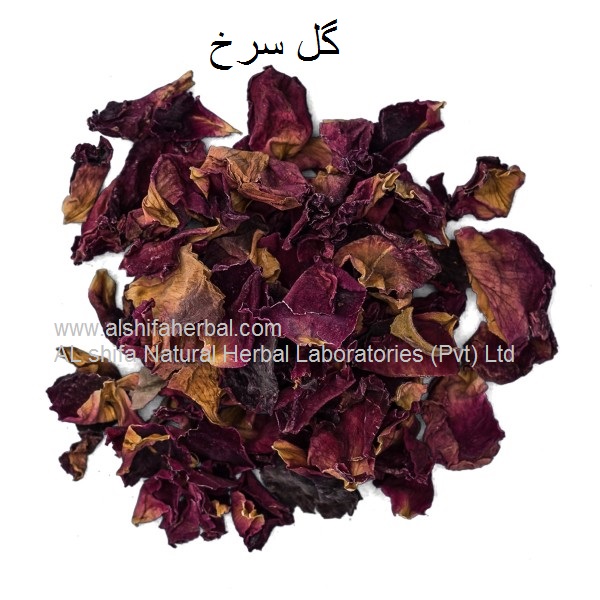







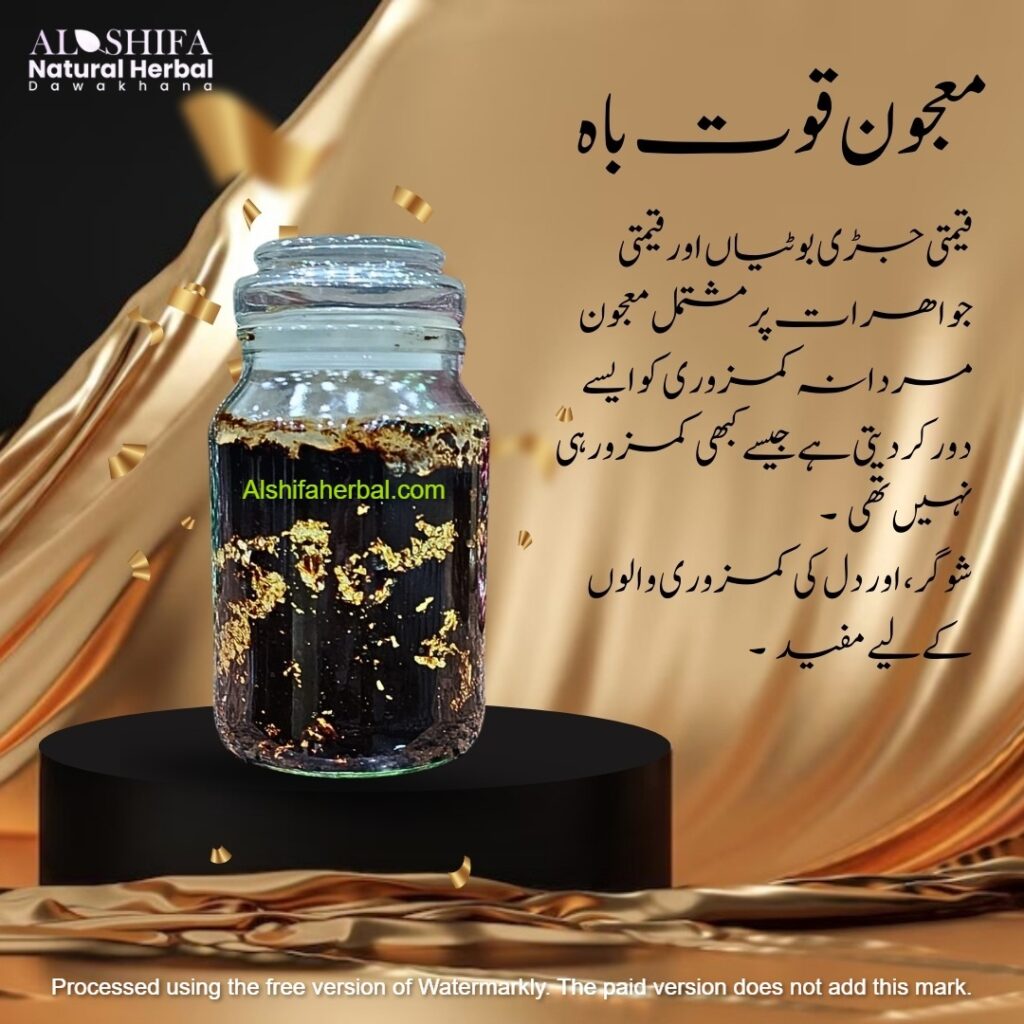
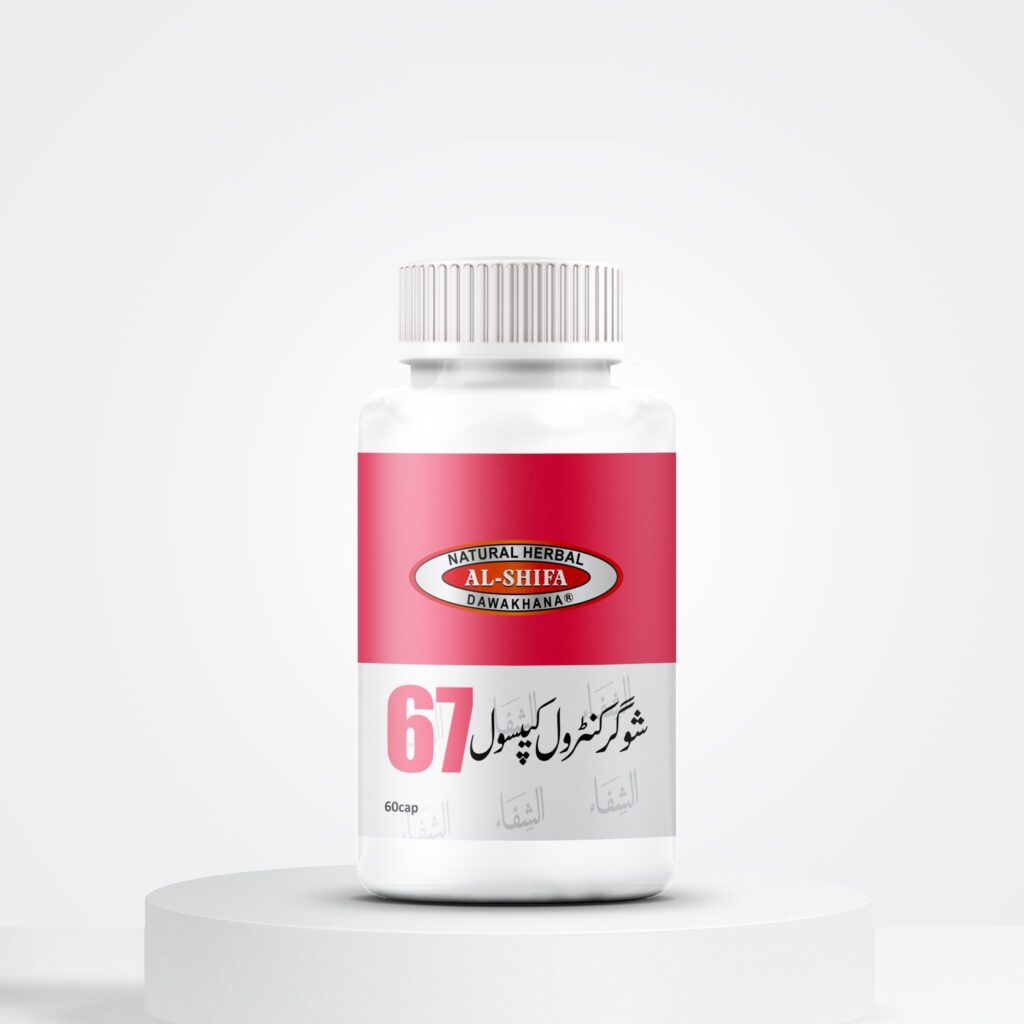
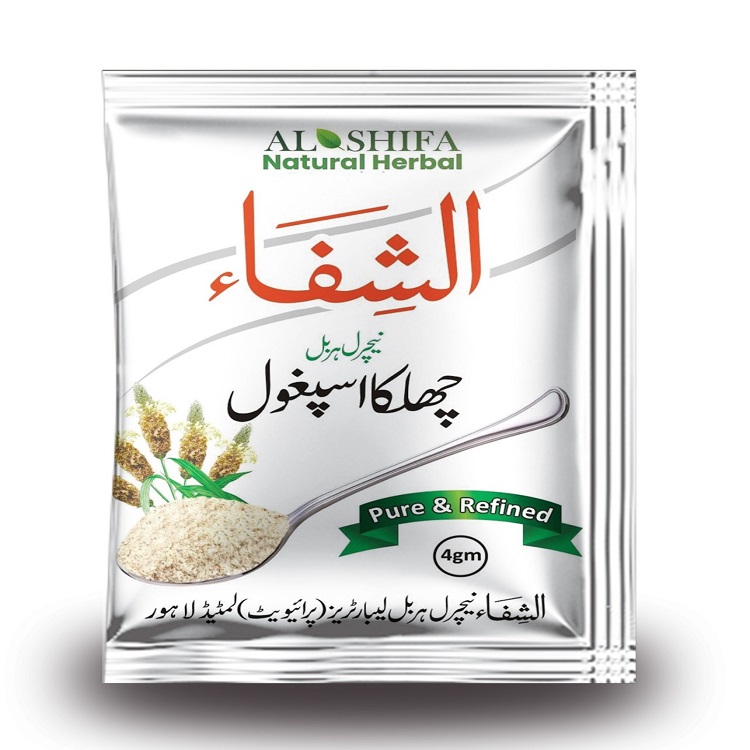



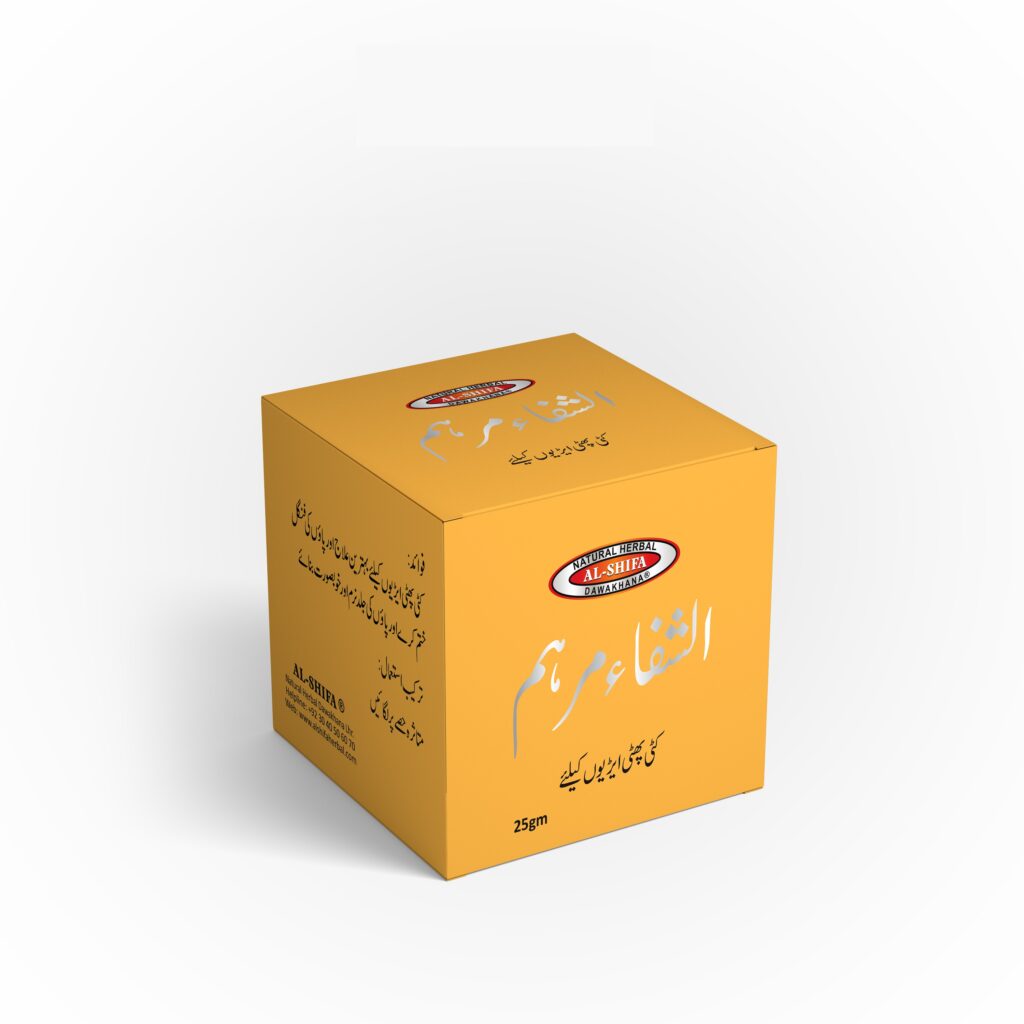



Reviews
There are no reviews yet.